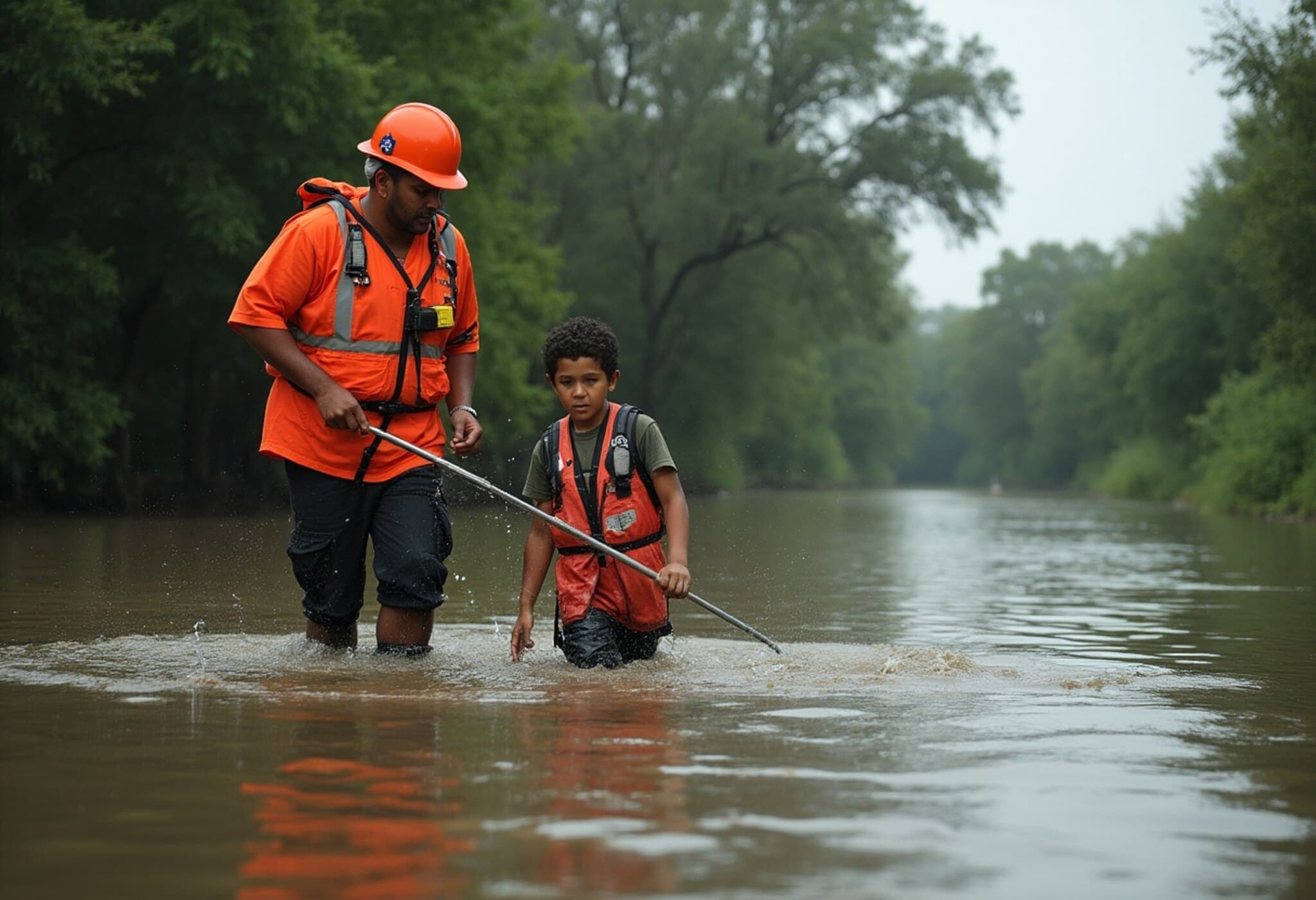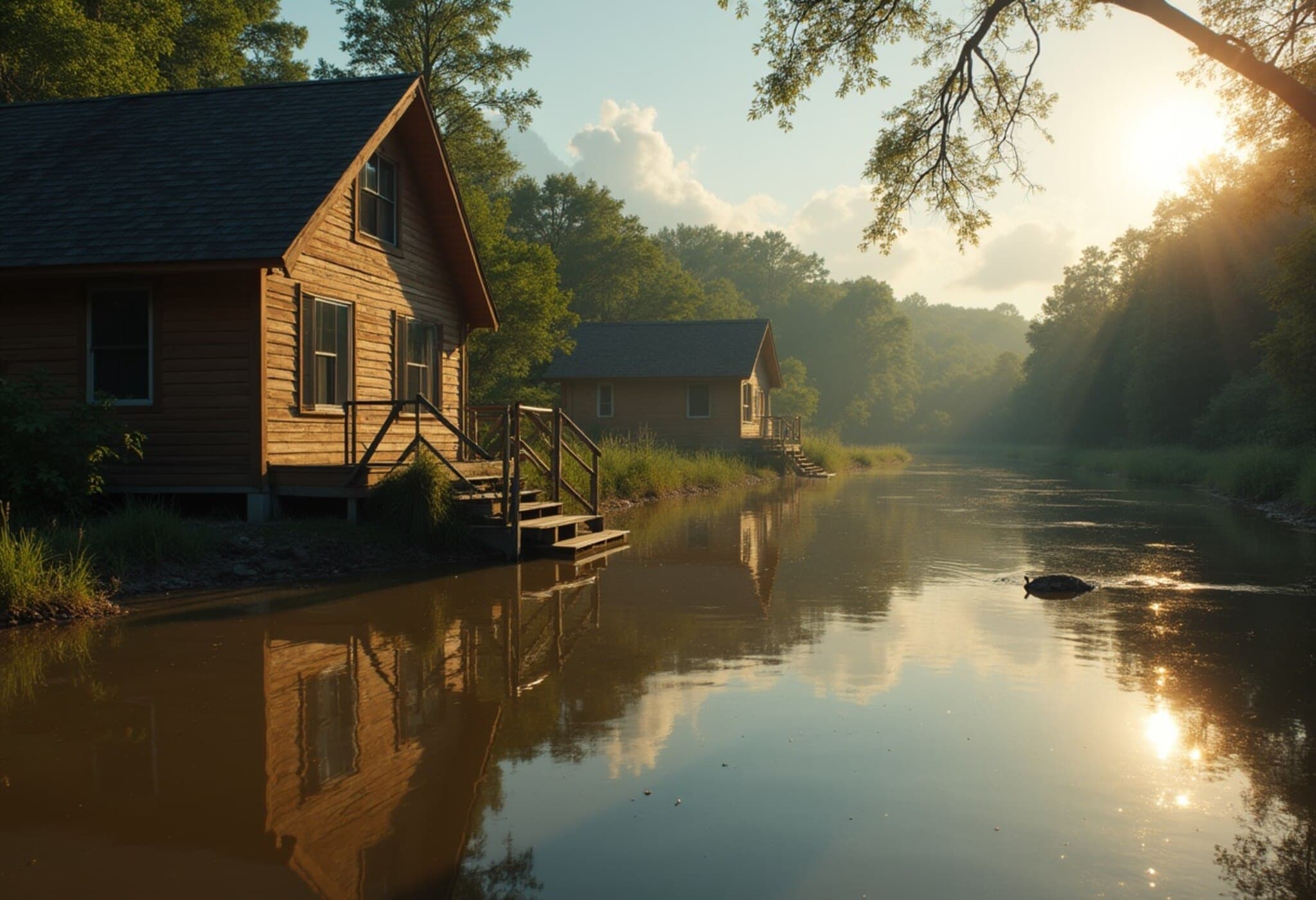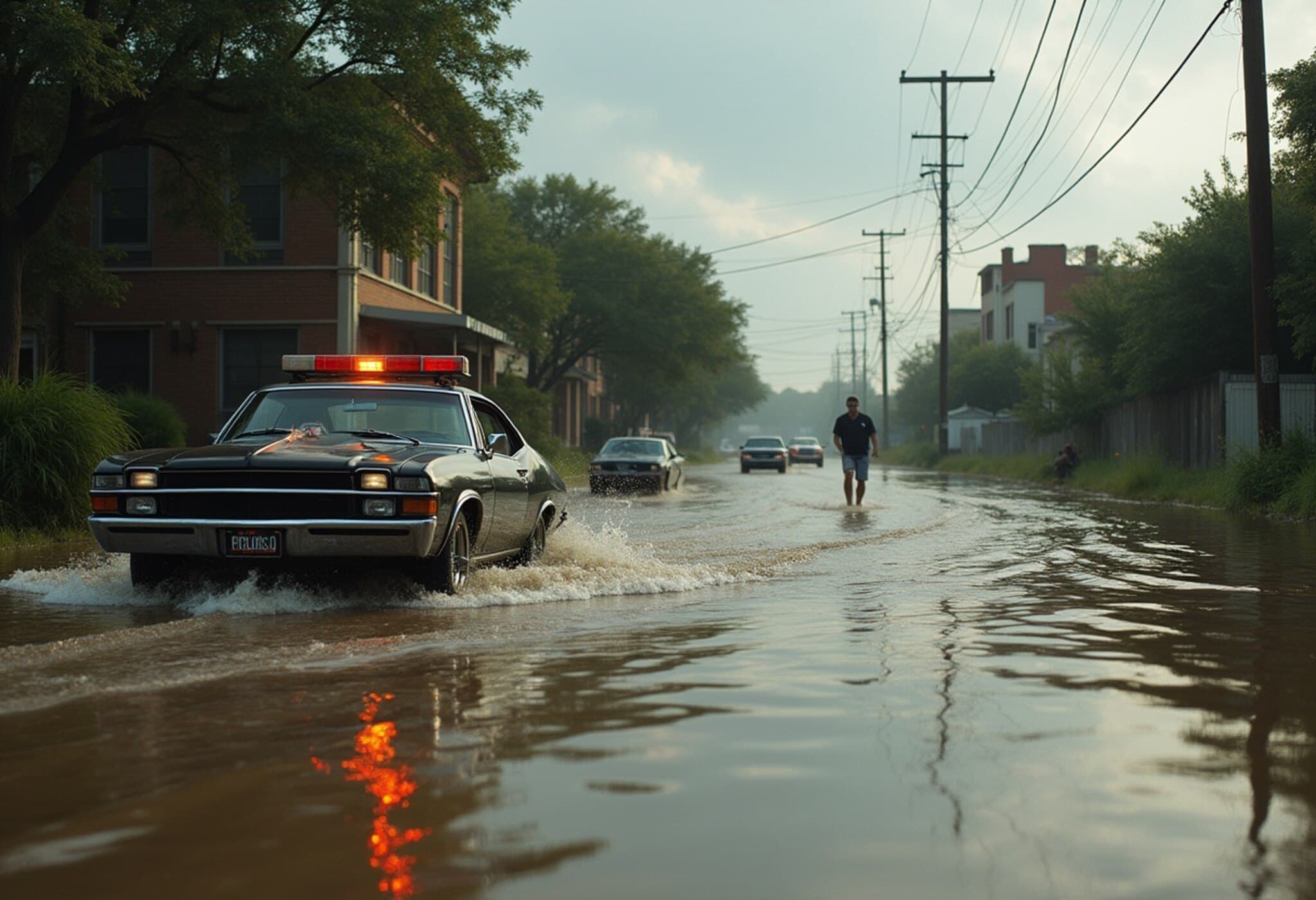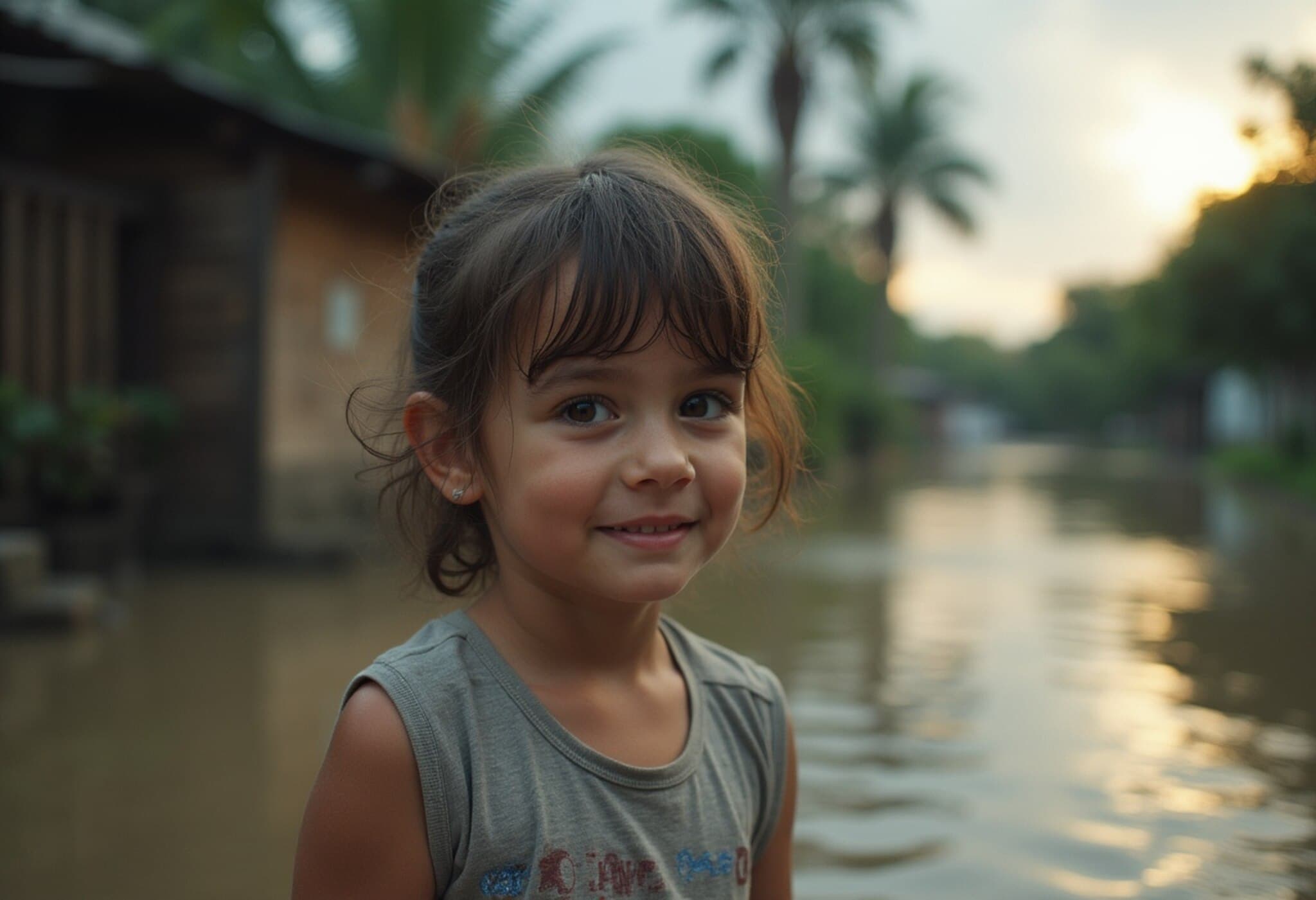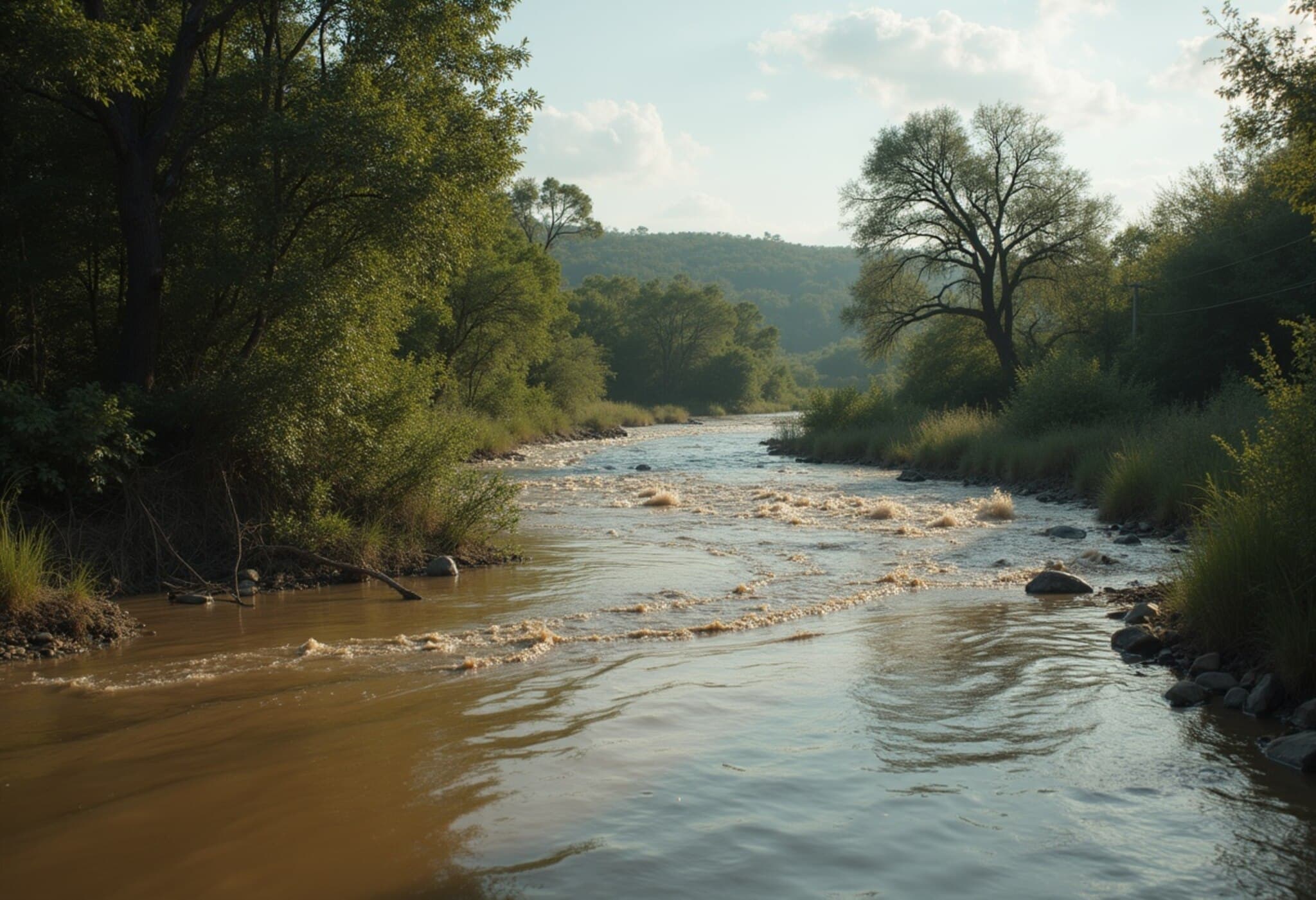Emergency Search for Central Texas Flood Victims Paused Due to New Flood Alerts
In a stark reminder of nature’s unpredictable might, emergency crews temporarily halted search and rescue operations for victims of the devastating flooding in central Texas on Sunday morning, July 13, 2025. This pause came as fresh rain warnings forecast rapidly rising water levels, complicating ongoing recovery efforts.
Safety Takes Precedence Amid Rising Waters
The Ingram Fire Department, serving the hardest-hit Kerr County, directed all search teams to evacuate the flood-prone Guadalupe River corridor immediately. Fire Department spokesman Brian Lochte explained, “Given the high potential for flash flooding, we had to prioritize the safety of our crews.” While the search is scheduled to resume Monday, operations will depend heavily on river conditions, he added.
Teams have been deploying a mix of helicopters, airboats, and drones to comb through the treacherous waters and difficult terrain since flooding struck over the July 4 holiday weekend. These relentless efforts focus on locating the missing and rescuing those stranded by the flood’s swift destruction.
Guadalupe River Faces Dangerously High Levels
The National Weather Service issued warnings on Sunday afternoon projecting the Guadalupe River could swell to nearly 15 feet (4.6 meters), approximately five feet above the official flood stage. Such levels risk submerging key infrastructure, including the Highway 39 bridge near Hunt, Texas, as well as flooding numerous secondary roads and bridges – creating hazardous conditions for emergency response and local residents alike.
A Flash Flood Catastrophe Beyond Expectations
The early July flood was catastrophic: the Guadalupe River surged an astonishing 26 feet (8 meters) in just 45 minutes before dawn on July 4, uprooting homes and sweeping vehicles away. It ravaged the scenic Texas Hill Country, a region dotted with vacation cabins, summer camps, and youth retreat centers.
Among the greatest losses was at Camp Mystic, a historic all-girls Christian summer camp located in a low-lying flood-prone area known locally as "flash flood alley." The camp tragically lost at least 27 refugees and staff members, including the long-time owner, Dick Eastland.
Experts affirm that this deluge exceeded the intensity of what the Federal Emergency Management Agency categorizes as a 100-year flood event. The suddenness of the flood – striking in the dead of night – left many unprepared, compounded by Kerr County's lack of an advanced early warning system.
Unprecedented Rainfall Overwhelms the Region
Former NOAA Chief Scientist Ryan Maue, now a private meteorologist, assessed the scale of the disaster: the storm unleashed approximately 120 billion gallons of rain over Kerr County alone. Similar deadly flash flood incidents also unfolded in other parts of Texas this summer. For instance, in San Antonio last month, localized heavy rain dumped over 7 inches (18 centimeters) within hours, causing multiple rescues and at least 13 fatalities.
Understanding the Broader Implications
This latest episode spotlights how climate variability intensifies flash flooding risks across vulnerable regions. Central Texas’ infrastructure and emergency planning, including county-level flood warning capabilities, face urgent calls for modernization to prevent similar tragedies.
Moreover, the human toll underscores the need for improved community outreach and preparedness. Conversations around environmental resilience, public safety investment, and land-use planning are becoming critical as unprecedented storms grow more common.
What Lies Ahead?
As search operations resume cautiously, authorities and communities brace for ongoing challenges. The evolving meteorological outlook demands vigilance to protect lives and property. Meanwhile, the recovery and healing process begins for the flood-stricken Hill Country.
Editor's Note:
Central Texas’ July 2025 flash floods serve as a potent reminder of our shared vulnerability to extreme weather events intensified by changing climate patterns. Beyond response and rescue, investing in early warning systems, public education, and resilient infrastructure is essential. As the Hill Country rebuilds, the story compels us to rethink how we live alongside nature’s most unpredictable forces.

